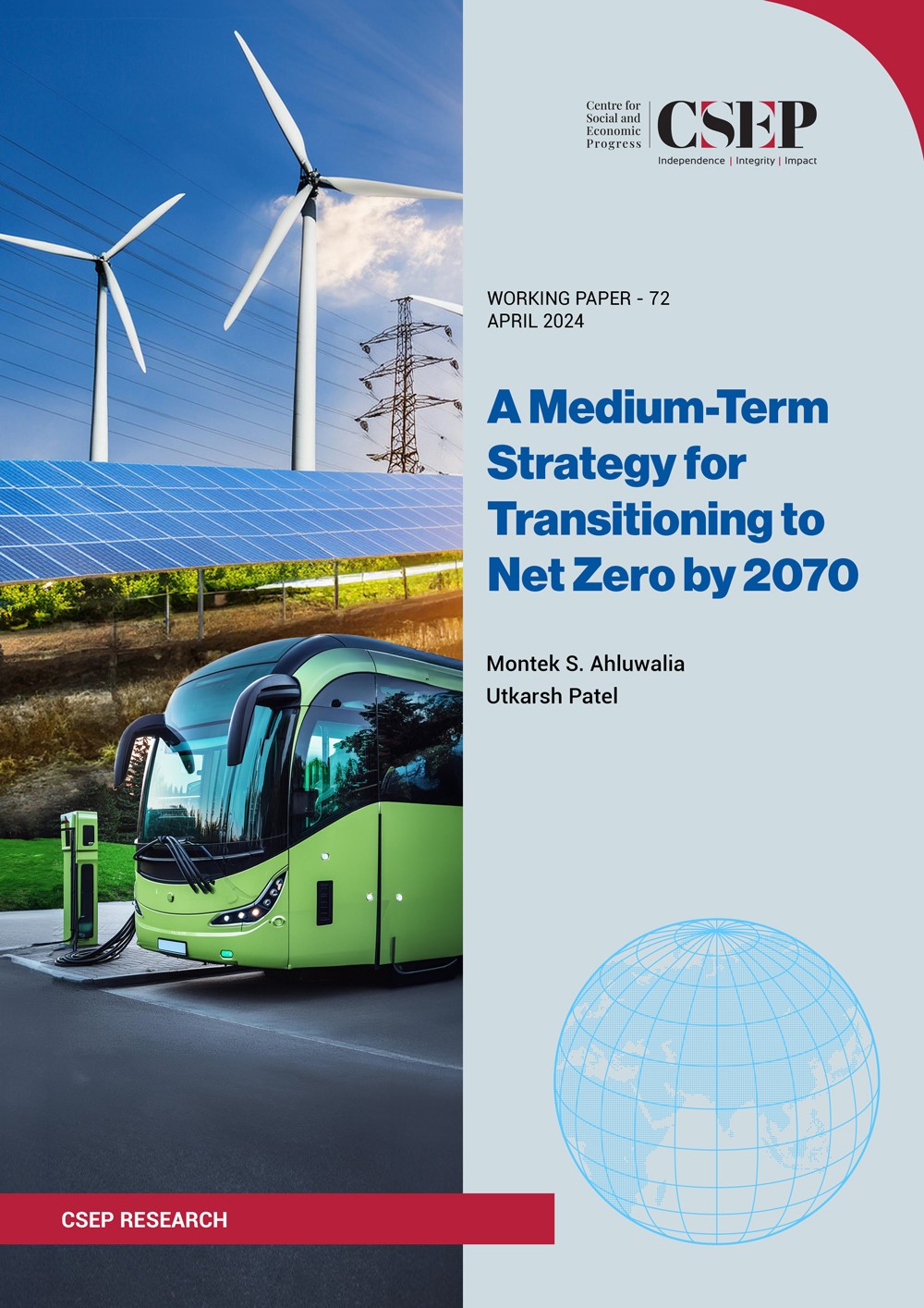
A Medium-Term Strategy for Transitioning to Net Zero by 2070
Abstract
DOWNLOADS
This paper assesses the feasibility of India achieving its stated goal of net zero by 2070 and presents a medium-term strategy for what would be required over the next decade to achieve this objective. It advocates a combination of price-based measures, such as an Emissions Trading System (ETS), and sector-specific interventions to facilitate the transition. The key elements over the next ten years would be (i) the design of the ETS, (ii) the pace of expansion of renewable energy (RE) capacity, (iii) the electrification of transport, and (iv) the shift to energy efficient systems, such as from private to public transport and from road to rail for freight. The paper also estimates that the additional investment needed to make this transition will be about 2% of India’s GDP by 2030, much of which will have to come from additional public and private savings. In this context, some form of carbon pricing would help generate additional revenue. A major challenge is that action will need to be taken across several areas, with responsibilities divided among different ministries in the central government and, in many cases, with state governments. An internally consistent and cost-effective strategy can only be developed through close consultation between the different actors, and this will require the establishment of a high-level commission chaired by the Prime Minister. As some of the actions needed are also politically difficult, it will be necessary to build a broad political consensus on the need for change. This would be facilitated if the strategy were discussed and endorsed by a high-level centre-states forum. A subset of the targets in such a strategy could become India’s new Nationally Determined Contributions (NDCs) to be submitted to the UN Framework Convention on Climate Change (UNFCCC) in 2025.
The global stocktake at COP28 in Dubai showed that the world is not on track to meet the global warming target, and all countries need to take stronger actions to reduce emissions if we are to avoid climate catastrophe. The issue is particularly important for India, as it will be one of the worst affected countries. India’s response is also important for the world. Although India’s per capita emissions are very low, they are rising rapidly due to robust growth, making India the fourth-largest emitter after China, the US, and the EU. Thus, India is systemically important in the struggle to control global emissions.
This paper explores what could be a credible medium-term plan for India consistent with its COP26 target of reaching net zero by 2070. The paper is organised as follows: Section 1 presents an assessment of whether it is technically feasible to reduce emissions to net zero, based on various quantitative studies that have examined the issue. Section 2 examines the role of price-based interventions—such as a carbon tax or a suitable alternative—in promoting a shift from polluting to non-polluting sources of energy, which is a critical part of the strategy. Sections 3 to 6 examine sector-specific interventions in various sectors that would help the decarbonisation objective. Sections 7 and 8 discuss, respectively, the steps that can be taken to build domestic manufacturing capacity to support the energy transition and the investment requirements of the transition. Section 9 draws the main conclusions.
Find on this page

The Centre for Social and Economic Progress (CSEP) is an independent, public policy think tank with a mandate to conduct research and analysis on critical issues facing India and the world and help shape policies that advance sustainable growth and development.




